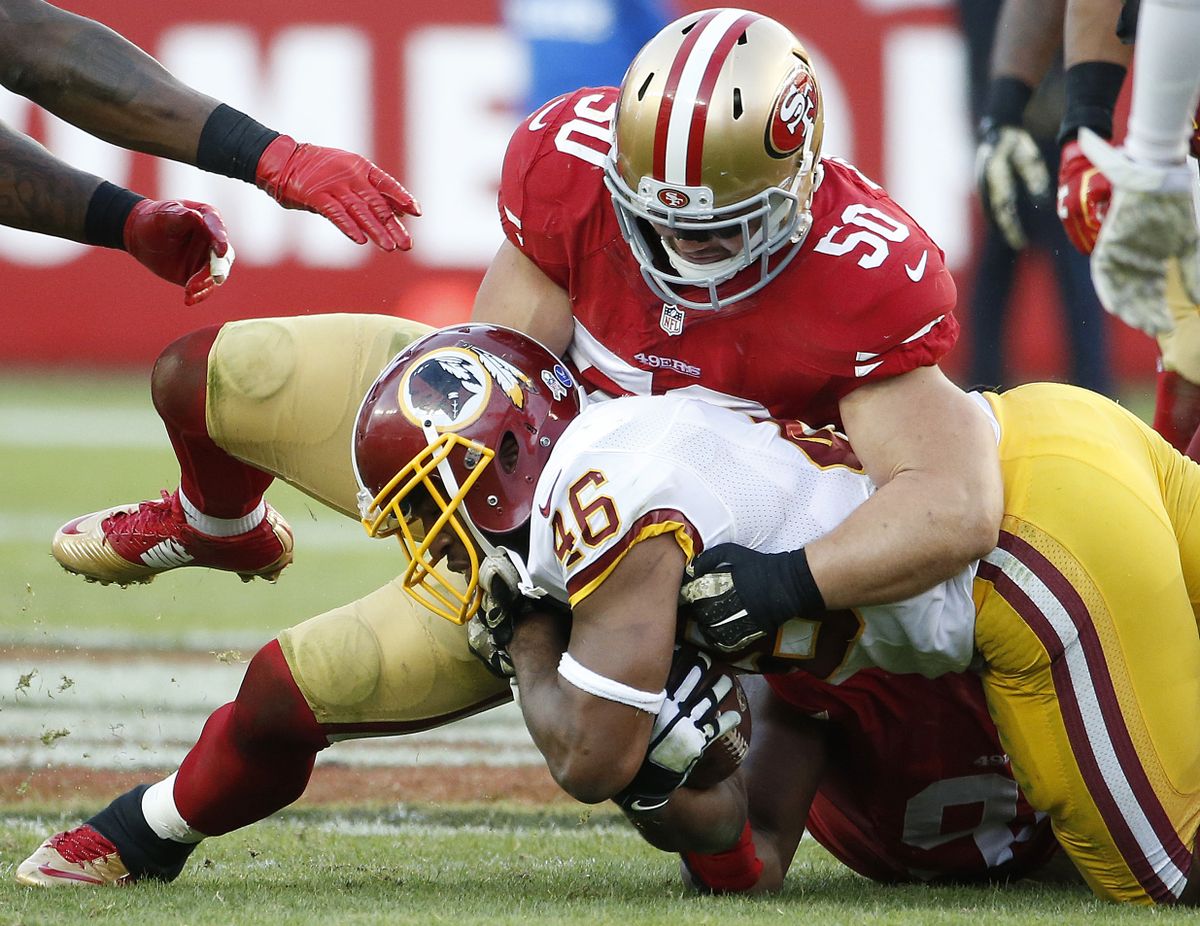Borland’s choice: a turning point

Make no mistake about it: Chris Borland’s decision to preserve his health by retiring in the prime of his career was a watershed moment for the NFL.
That doesn’t mean the NFL will wither away and die, the victim of its own core violence. It doesn’t mean there will be a stampede of young, vigorous players following Borland out the door.
The league is too insanely popular – seemingly immune to scandal, greed and ineptitude – to lose its hold on the American public. Those who see football going the way of boxing and disappearing from the sporting mainstream are engaging in wishful thinking.
And not many players will be as self-aware and self-preserving as Borland, who painstakingly studied the research on football-related trauma and came to his conclusion. Far more players will still choose to disregard potential future disability to keep experiencing the rush (and financial windfall) of the present.
What it does mean, however, is more subtle, but no less vital. It means, first, the NFL no longer can claim that this issue of player safety is a relic of the past.
No matter how many press releases it issues saying the game has never been safer, the counter-argument will be bold and indisputable. It now has a name, and a face: Chris Borland’s.
This will be a silent revolution. It won’t be a stampede, but there unquestionably will be players emboldened by Borland to re-evaluate why they stay in the sport.
It used to be taboo to even entertain such thoughts. Just ask Wesley Walker, the ex-Jets receiver who this week gave a powerful accounting of his health woes at age 59 – six football-related surgeries and a head-to-toe litany of lingering ailments.
“I’m in pain every day,” Walker told Gary Myers of the New York Daily News.
When asked by Myers if his career was worth it, Walker responded, “Not at all. I would have taken another path. Maybe become a commentator. Just from a physical standpoint, there is no way I would put my body through what I do now. I don’t wish this on anybody.”
Of course, such cautionary tales have been heard before, and largely ignored by the rank and file of the NFL. The even-scarier stories of Mike Webster, Dave Duerson and Ray Easterling, three ex-football players whose brains were found, after their deaths, to have chronic traumatic encephalopathy (CTE) didn’t seem to register more than detached regret.
CTE is a degenerative disease that often results in memory loss, aggression, confusion and depression. According to the Associated Press, signs of degenerative brain trauma were found in 76 of 79 NFL players whose brains were examined by the CTE center at Boston University.
That’s mind-blowing stuff that has done nothing to chip away at the growing popularity of football. The NFL will tell you, rightly so, that they are taking steps to make the game safer. But the NFL will remain a risky venture as long as players keep getting bigger and faster. Astrophysicist Neil deGrasse Tyson last month tweeted (and tellingly was retweeted by Borland): “Just an FYI: A 250 lb football player, running 15 mph, has more kinetic energy than a bullet fired from an AK-47 rifle.”
Maybe fans now will begin to question their undying devotion to a sport that causes such damage.
But this Borland story will hit hardest where it has the potential to hurt the NFL the most: in living rooms across the country, where parents must decide whether to let their kids go out for football. An increasing number of parents are saying no, and that number is bound to go up.
That’s not to say there won’t always be a pool of football players. But agent Leigh Steinberg already has theorized that those players increasingly will come from the ranks of the lower class. Those from the middle and upper classes, with more career options – such as Borland – will be steered away from football at a young age.
Let’s hope that one upshot of all this is to hasten the drive for better equipment that will lessen the impact of all those pseudo-AK-47 shots. The rules can keep being tweaked to protect players, but as former Packers tight end Tom Crabtree told the Milwaukee Journal-Sentinel, “If the game ever slows down to the point or restricted to a point where brain injuries don’t occur, the game probably doesn’t look like football anymore.”
Therein lies the rub. The violence is what helps attract us to the sport. And the thrill of testing your will against your opponent’s is what keeps players coming back.
Peter Gent, the ex-Cowboys receiver who in 1973 wrote “North Dallas Forty,” which exposed the underside of the NFL, explained the allure in his foreword to the 30-year-anniversary edition of the book:
“I still remember vividly the struggle to nourish desperate desires to be alive as a man can be – to live each day as if it were the last – feeling life pumping through us with the hammering of our hearts. It was a great life. A lot of scary high-wire work, too many injuries, and lots of pain. But I felt more in one Sunday afternoon than I did later on in whole years – writing is the only thing I have done that comes close to being as terrifying as being a football player.”
That’s what Borland chose to give up, for profoundly sensible reasons. That decision will make a lot of people think hard.